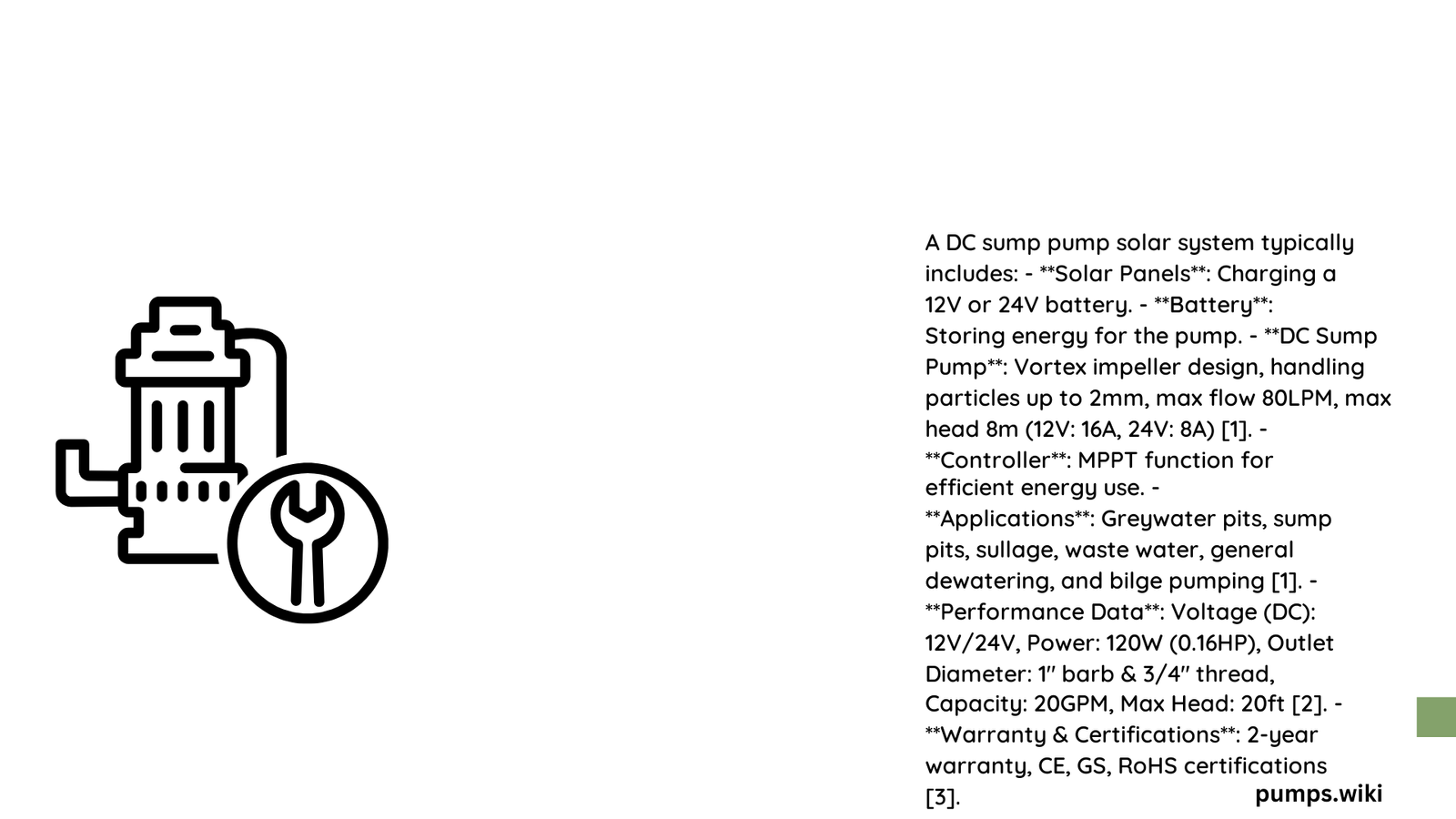DC sump pump solar technology represents a revolutionary approach to water management, combining sustainable energy with efficient water removal. Homeowners and agricultural professionals can now leverage solar power to operate sump pumps, reducing electricity costs and minimizing environmental impact while ensuring reliable water drainage and management in various settings.
What Makes DC Sump Pump Solar Systems Unique?
How Do DC Solar Sump Pumps Work?
DC solar sump pumps operate using direct current electricity generated by photovoltaic panels. Unlike traditional AC pumps, these systems convert solar energy directly into mechanical pumping action, offering several distinct advantages:
- Energy Efficiency: Minimal power loss during energy conversion
- Off-Grid Capability: Operate independently from electrical grid
- Low Maintenance: Fewer moving parts compared to traditional pumps
| Component | Function | Key Specification |
|---|---|---|
| Solar Panels | Energy Generation | 24V-48V Range |
| DC Pump | Water Movement | 330-500W Capacity |
| Charge Controller | Power Regulation | MPPT Technology |
What Are the Installation Requirements?
Site Selection Criteria
- Minimum 6 hours direct sunlight exposure
- Stable ground for mounting solar panels
- Proximity to water source
- Clear drainage path
Essential Installation Steps
- Conduct comprehensive site survey
- Calculate water volume and power requirements
- Select compatible solar pump components
- Install mounting structure
- Mount solar PV arrays
- Install pump system
- Connect electrical and water pipelines
- Test and commission system
What Performance Factors Impact DC Sump Pump Solar Systems?
Key Performance Metrics
- Flow Rate: Typically 1000-5000 gallons per day
- Head Pressure: 20-150 feet vertical lift
- Efficiency: 85-95% energy conversion
How to Choose the Right DC Sump Pump Solar System?
Evaluation Criteria
- Water demand volume
- Geographic location
- Sunlight availability
- Budget constraints
- System scalability
What Are the Cost Considerations?
Typical Investment Range
- Basic System: $1,500 – $3,000
- Advanced System: $3,500 – $7,000
- Long-term Savings: 50-70% reduction in operational costs
What Maintenance Practices Ensure Longevity?
Recommended Maintenance Checklist
- Quarterly panel cleaning
- Annual electrical connection inspection
- Pump lubrication every 12-18 months
- Battery health monitoring (if applicable)
What Are Potential Challenges?
System Limitations
- Dependent on sunlight availability
- Initial high investment
- Complex installation process
- Potential performance variations
Conclusion

DC sump pump solar systems offer an innovative, sustainable solution for water management. By understanding installation requirements, performance metrics, and maintenance practices, users can effectively leverage this technology for efficient water removal.
